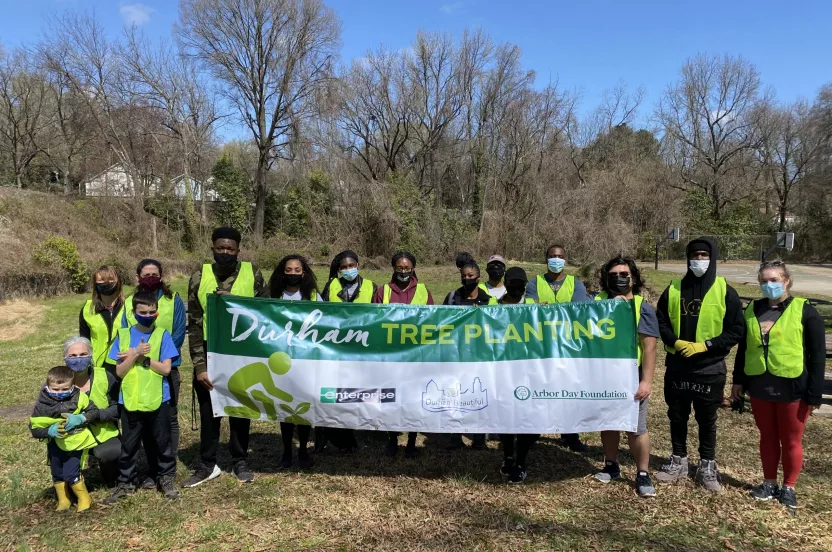Give before midnight on July 31 to double your impact where trees need us most. CHOOSE A PROJECT
September marks National Honey Month. Did you know there are more than 300 honey varieties? Did you also know there’s a phenomenon happening around the world where the bees are disappearing? If we don’t have bees, we won’t have honey.
Bees need two kinds of food to make honey: nectar and flowers. They suck nectar from the flower and store it in a designated ‘sac’ used to make honey. They also gather pollen from the anthers of flowers. When the nectar sacs are full the bees return to the hive to pass the nectar to the other bees. During the process the moisture content is reduced and honey is made. Then, the honey is placed in storage cells inside the hive and coated with beeswax.
Bees are key pollinators, and in case you’re not familiar with the role they play outside of honey production, just know that 1/3 of everything you eat is a result of bees pollinating crops. While we love the myriad benefits natural honey provides, their role to the environment is so much greater than that.
The USDA reported preliminary results of a new study showing that 44% of bee colonies in the US died in 2015. With their death toll rising, it’s becoming more necessary to plant bee-friendly trees.
If you want to continue enjoying your honey and celebrating National Honey Month for years to come, then consider planting these trees to help preserve bees, and their honey.
Spring blossoms (Very early bloom time)
Almond
(Early to later bloom time)
Plum (and most other fruit trees)
Native Mesquite
Summer blossoms (Very early bloom time)
Viburnum
(Early to later bloom time)
Basswood
Elderberry
Rose
Native Mesquite (second bloom period)
Fall/winter blossoms
Franklin Tree
California Laurel
Potentilla
Blue Mist Shrub
Bodnant Viburnum
Seven-Son Flower
Sunflower
Aster
While there are theories as to why bees are disappearing (harmful pesticides, viruses), the root cause is still unknown. Let’s stay proactive in keeping them around a bit longer. Here’s what you can do to help.
- Avoid spraying plants in bloom and apply chemicals after bees have returned to their colonies at night. Although the best way to conserve pollinators, according to the Xerces Society, is to avoid pesticides altogether.
- Where possible, plant or maintain regionally native plant species—in general, they are able to support a larger number of species than non-native plants and often have a higher habitat or food value…especially for bees. Some native bee species are “specialists” and feed only a few specific native plants. Also, single-flowered plants (which are closer to their natural form) are better for bees than double-or triple-flowered ornamental and fruit trees.
- Provide nesting sites for our native bees in your landscape by leaving areas of your yard or garden undisturbed and uncultivated. These bees are solitary or nest in very small numbers with different nesting requirements from the large hives created by European honeybees.
- Plant a mix of trees and shrubs that are rich sources of both nectar and pollen, as bees need both for proper nutrition. (Don’t have space for any more trees? Planting crocus, anise hyssop, bee balm and asters in your perennial garden can be of great service to bees, too).
- When creating the plan for or adding to your garden/yard, use a diversity of plant species with a succession of blooms from early spring through fall…this provides foraging bees with steady sources of nutrition. Clumping plants of the same species into a small area attracts more bees than individual or widely scattered plants.
Visit the USDA website to learn more about the decline of honeybees.




